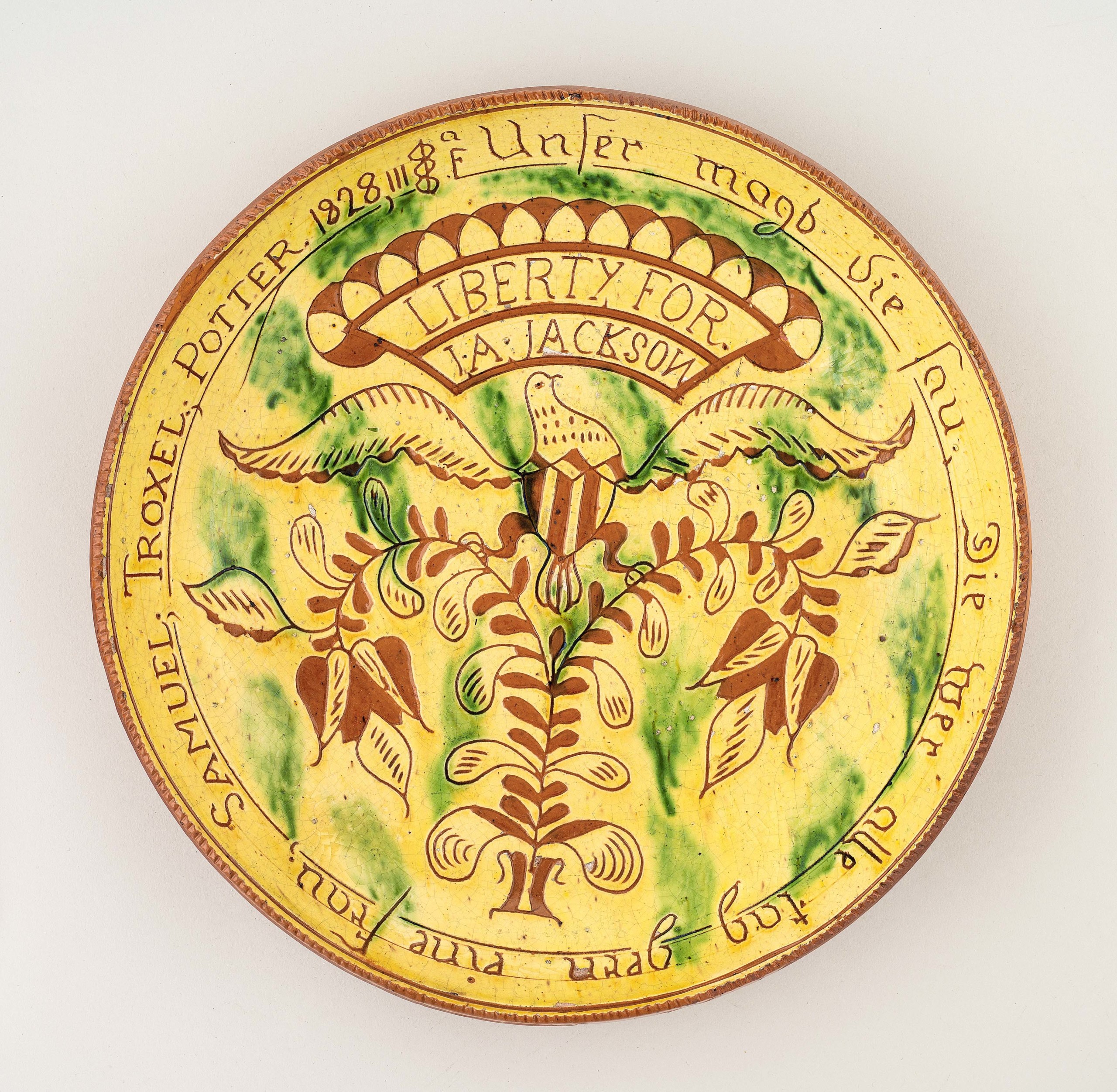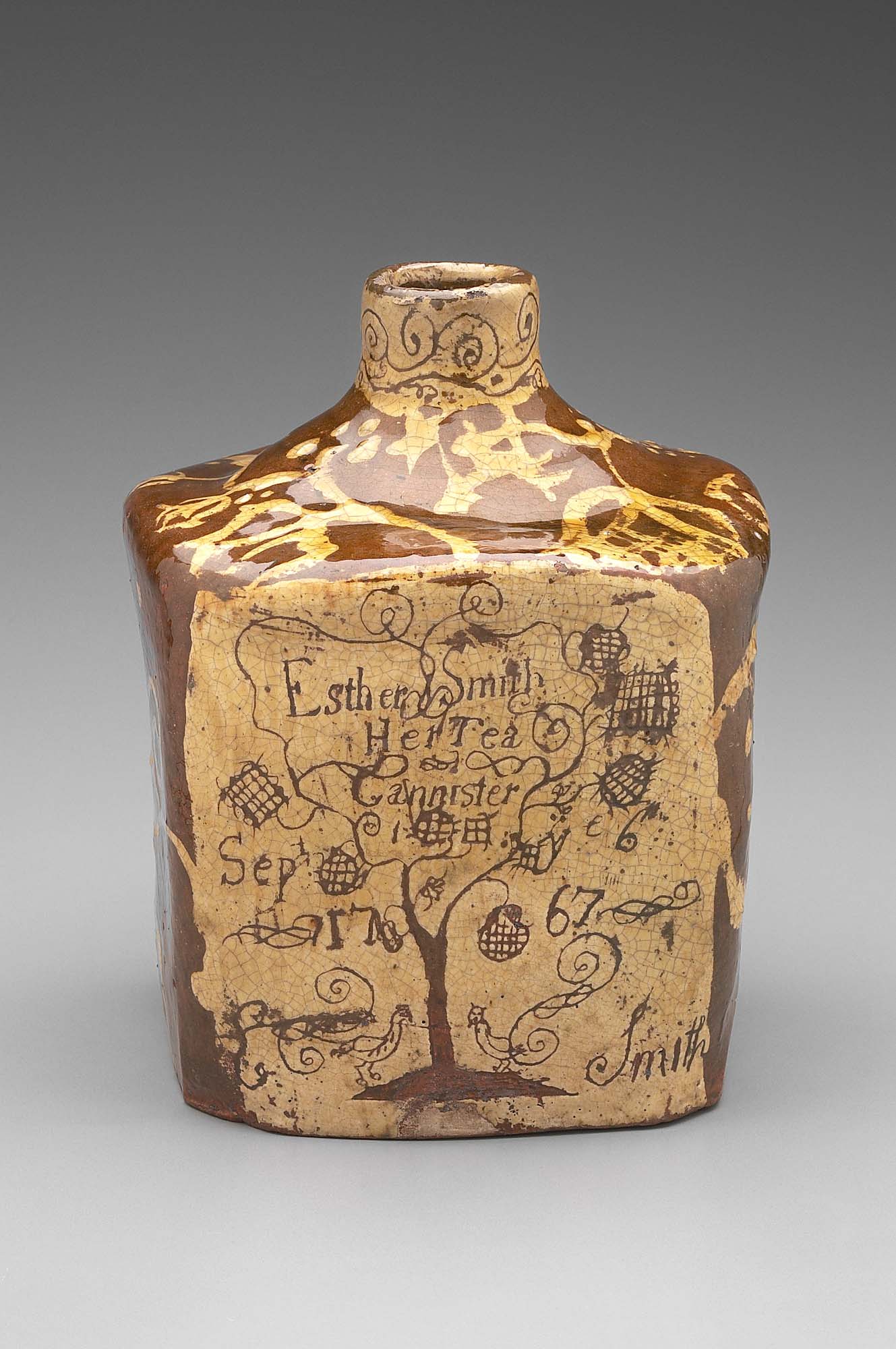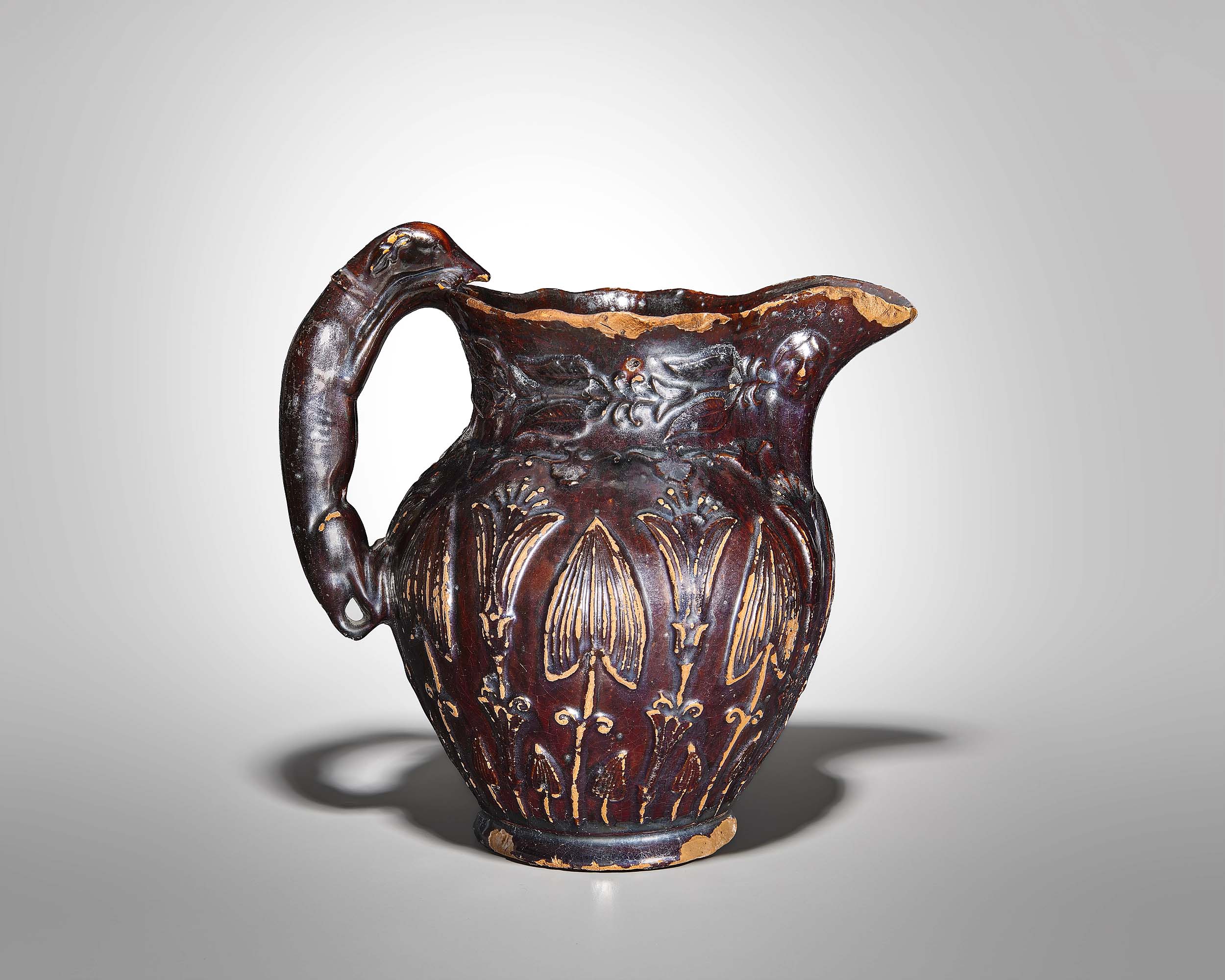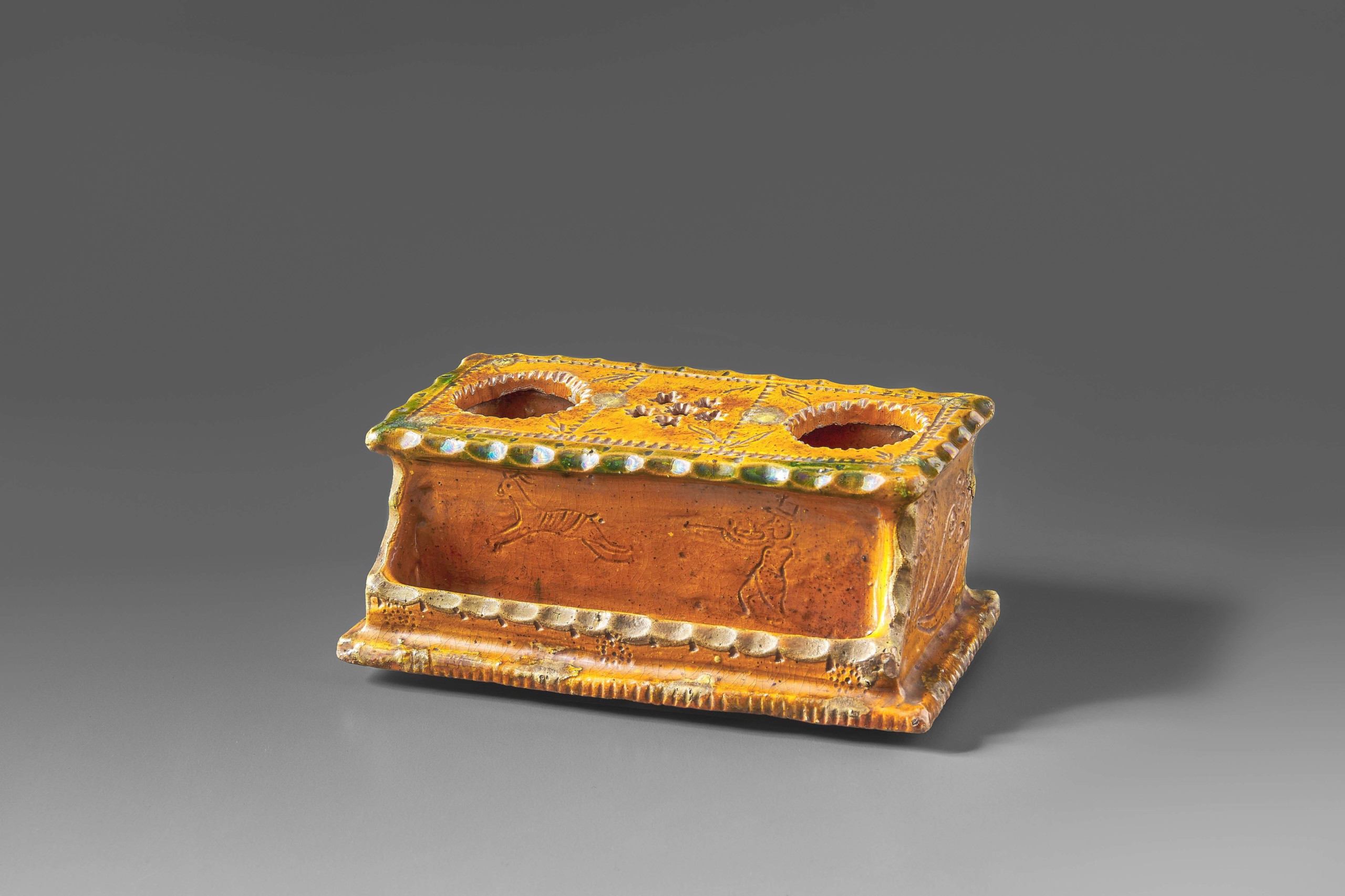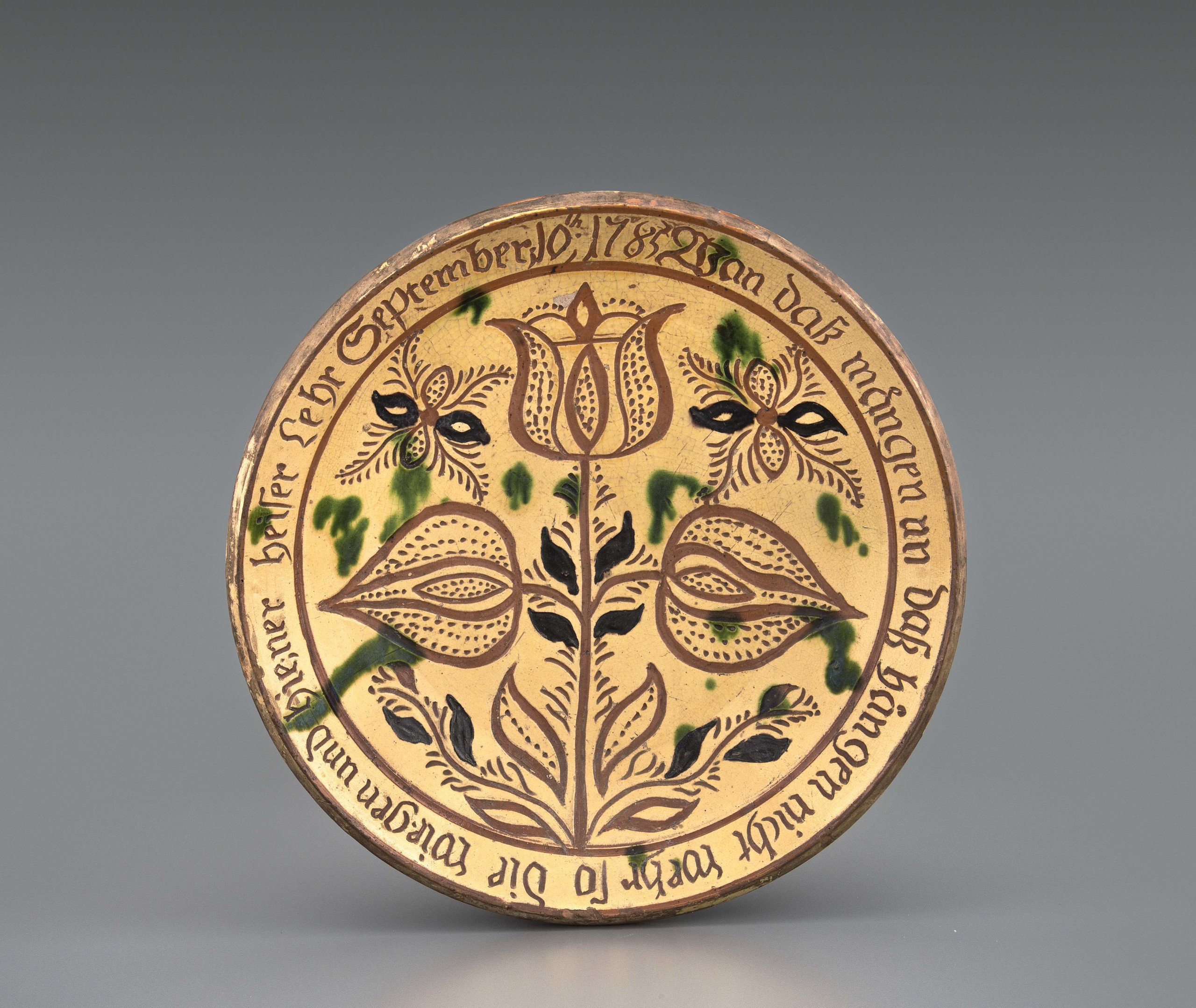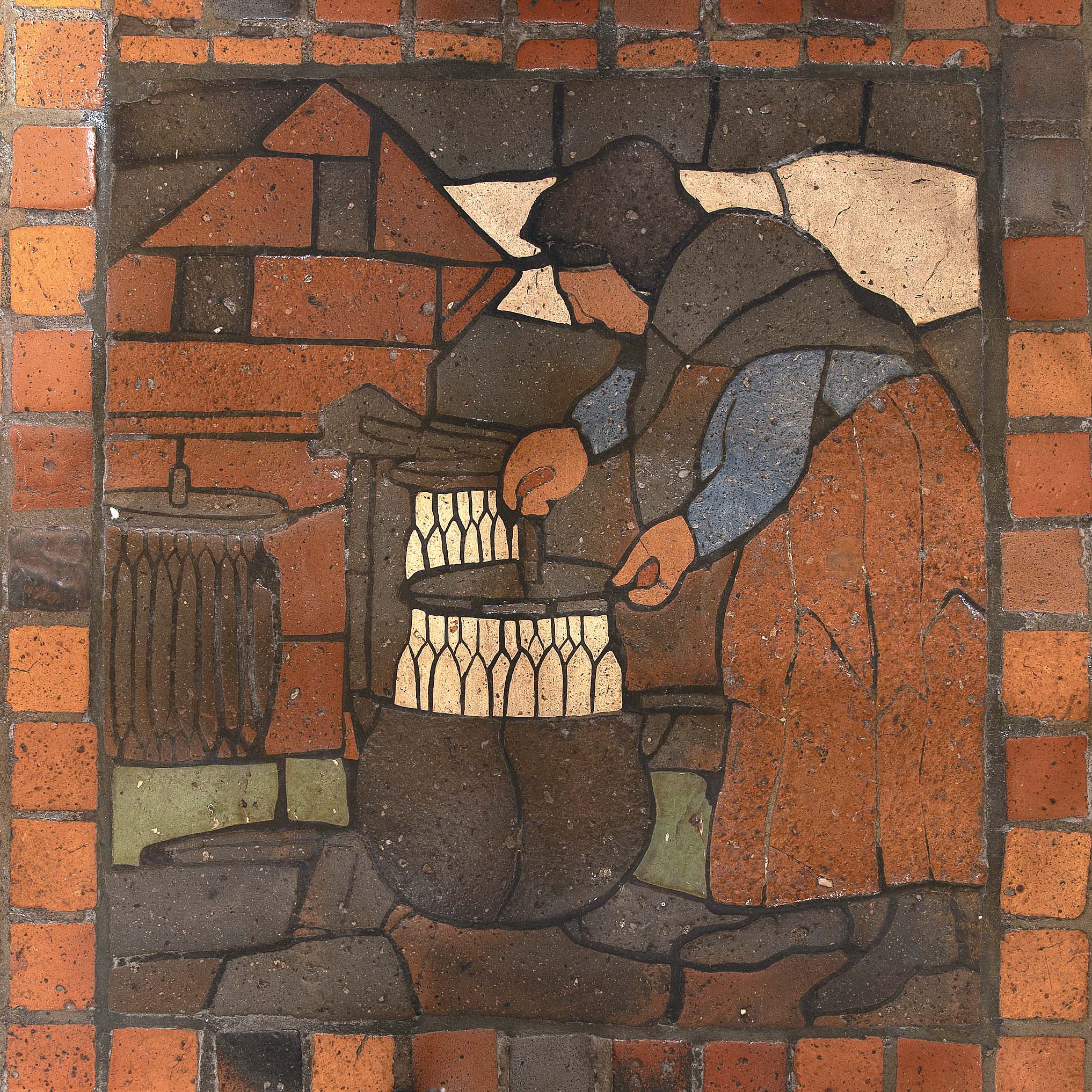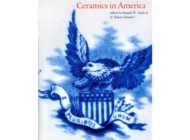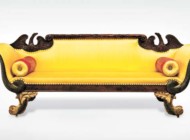
Review by Madelia Hickman Ring
Americana Insights, the annual scholarly periodical dedicated to American folk art, has taken a narrow path for its third volume. Previous editions have covered a myriad of topics, from monographic papers on a particular artist to more general coverage of objects based on region or date. Americana Insights 2025, however, devotes the entirety of its 335 pages to American redware, specifically that made by the Pennsylvania Germans from the Eighteenth to Twentieth Centuries. It is intended to serve as the catalog for Historic Trappe’s newest exhibition, “From Hubener to Medinger: Redware Potters of Southeastern Pennsylvania,” which will be on view in the Center for Pennsylvania German Studies from November 8-March 29 and which is the subject of this issue’s cover story.
Several people integral to the Historic Trappe exhibition told Antiques and The Arts Weekly that the 2025 edition of Americana Insights would help redefine the scholarship of the field, a topic that was woefully under-explored after Edwin Atlee Barber published, in 1903, his Tulip Ware of the Pennsylvania-German Potters: An Historical Sketch of the Art of Slip-Decoration in the United States (Pennsylvania Museum & School of Industrial Arts).
The 2025 Americana Insights edition does just that and is comprised of eight broadly and colorfully illustrated essays, four briefs and three appendices.
Johanna Metzgar Brown, chief curator of Old Salem Museums & Gardens and the Museum of Early Southern Decorative Arts, provides a great survey on the topic in the book’s first essay, titled “‘The Dish Is Made of Earth’: Revisiting Pennsylvania German Redware.” Brown brings readers of every knowledge level up to speed with not only an account of earlier scholarship but an overview detailing pottery traditions, forms, decoration and even the history of the market of Pennsylvania German redware.
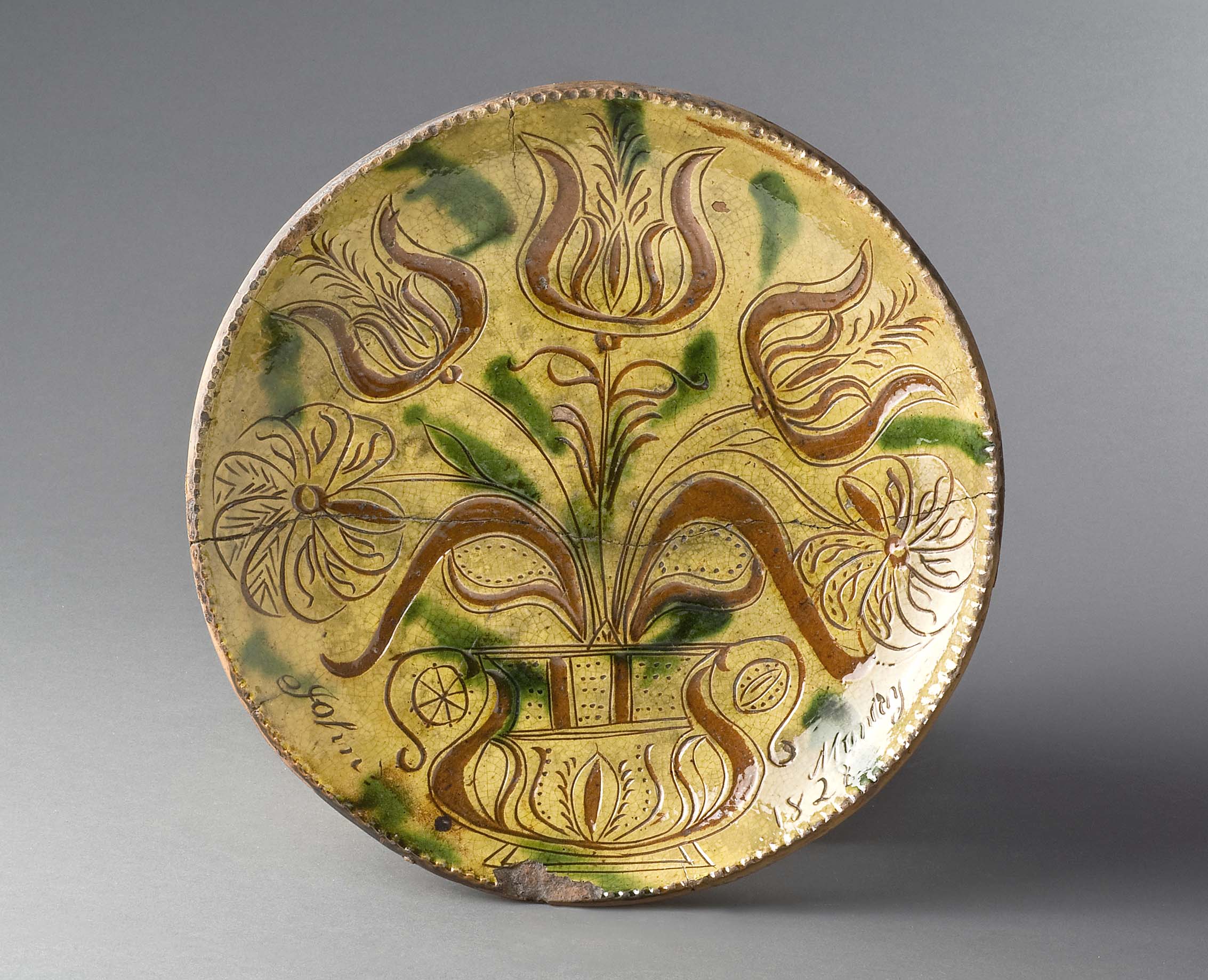
Dish, John Monday (1808-1862), Haycock Township, Bucks County, Penn., 1828, lead-glazed earthenware, 10⅛ inches. Philadelphia Museum of Art, Gift of John T. Morris, 1900-12.
The second essay was written by Lisa Minardi, editor of Americana Insights and the executive director of Historic Trappe. “Georg Hubener, Master Potter of Montgomery County, Pennsylvania” begins with the bold statement: “Georg Hubener (1761-1835) is one of the earliest, rarest and most sought-after of all Pennsylvania German potters.” She goes on to support that assertion, discussing his influence on generations of Southeastern Pennsylvania potters and providing an in-depth examination of his surviving body of work: just 11 dishes and two double-handle jars, including the dish featured on the cover of Americana Insights.
Sgraffito decoration (in which motifs are scratched into the surface of an object rather than applied over the top) is thoroughly explored in the next essay, “‘God Blass You All in Food and Drink’: Sgraffito Teaware in Pennsylvania” by Laini Farrare. The graduate of the Winterthur Program in American Material Culture, and current PhD student in the history department at the University of Delaware, argues that the fusion of German decorative styles with Anglo ceramic forms illustrates how artisans adapted their European cultural heritages to diverse communities rather than viewing sgraffito as an inherently Germanic tradition.
Historic Trappe curator Chrisopher Malone takes a fresh look at a group of approximately 30 pieces of early Nineteenth Century Pennsylvania redware decorated with “colorful bursts of stars and tulips, wavy lines and incised stippling emerging from stars, petals and leaves” that has, for more than 40 years, been attributed to Berks County, Penn., farmer Solomon Grim (1787-1827). In his essay titled, “Black, White and Green All Over: The Potter Once Known as Solomon Grim,” Malone proposes the reattribution to an unknown potter working in central Pennsylvania, who he christens the “Eight-Pointed Star Artist” based on the discovery of an addition to the group, a newly discovered jar with provenance to the original owner.
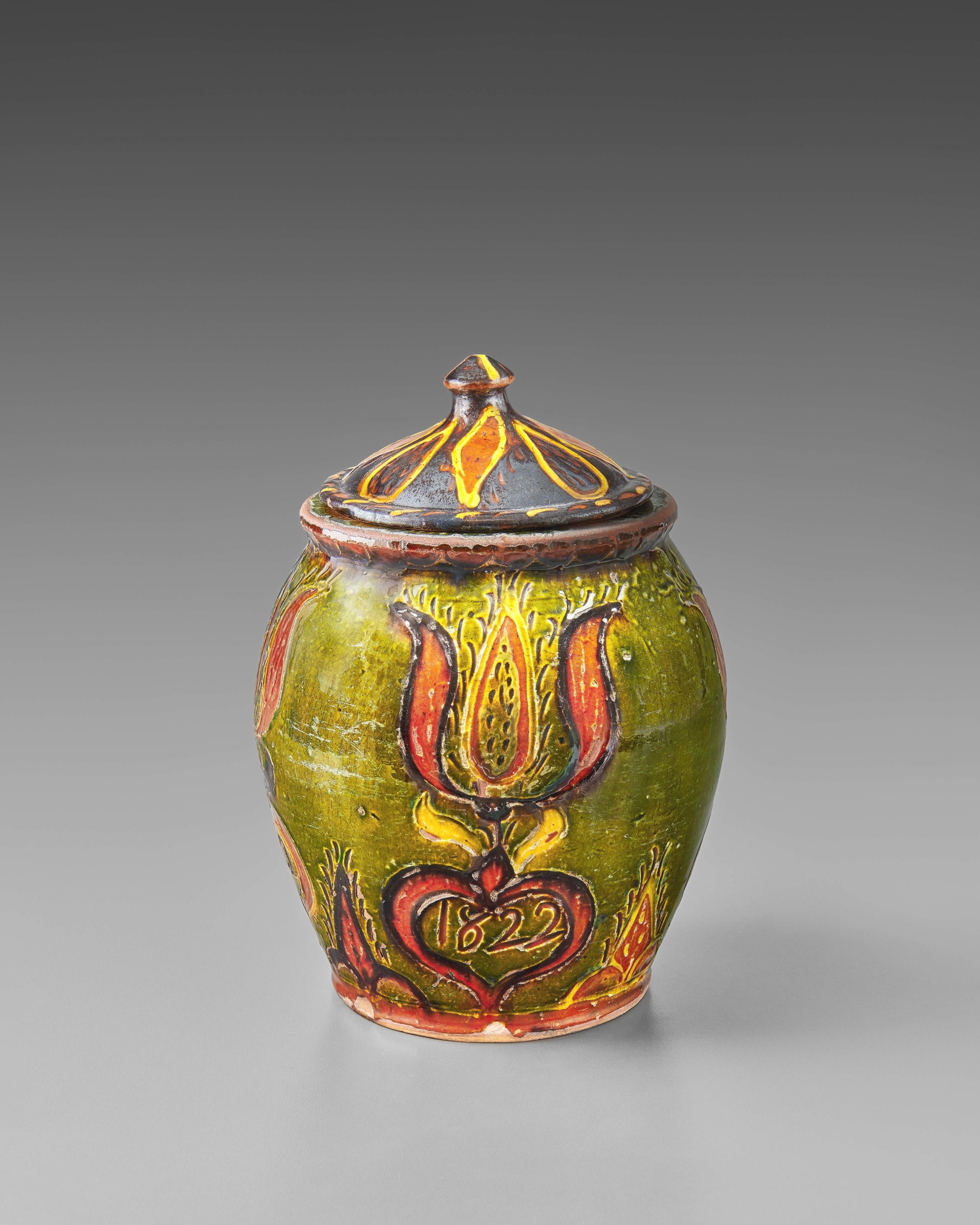
Jar with lid, attributed to the Eight-Pointed-Star Artist (formerly Solomon Grim), probably Northumberland or Union County, Penn., 1821, lead-glazed earthenware, 12 inches (height), 5¼ inches (diameter of base). Collection of Robert and Katharine Booth. Michael E. Myers photo.
Southeastern Pennsylvania potters occasionally employed political and patriotic themes as decorative elements; this is the subject of collector Jeff Pressman’s essay, “Samuel Troxel: Potter to Upper Hanover Township, Montgomery County, Pennsylvania.” Troxel’s dishes offered what Pressman writes as “a counternarrative to the deep-seated nativism often directed by colonial-era Anglo Americans toward German settlers…” and possibly in response to the contentious 1824 presidential election.
Malone takes up his pen to document “The Potters of Haycock Mountain: Conrad Mumbauer, John Monday and Simon Singer,” the most prolific of which was Conrad Mumbauer (1761-1845). His essay, as indeed all attributions to the Mumbauer pottery, centers around a single dish, signed by Mumbauer’s most successful apprentice, John Monday (1808-1862). Following his essay, Malone provides an appendix listing 16 pieces additionally attributed to the Mumbauer-Monday pottery.
Lisa Minardi and collector/scholar R. Erich Hess acknowledge Jacob Medinger (1856-1932) as “long regarded as the last of the traditional Pennsylvania German potters.” Over the course of more than 60 years, the prolific potter produced thousands of pieces of redware in a multitude of forms, from utilitarian to ornately decorated pieces. His story was closely entwined with the Neiffer family, headed by patriarch Christian Nieffer (1790-1869) and both are investigated in “The Medinger and Neiffer Potteries of Montgomery County, Pennsylvania.” Like the preceding essay, an appendix of additional pieces made by Medinger will benefit scholars, curators and collectors alike.
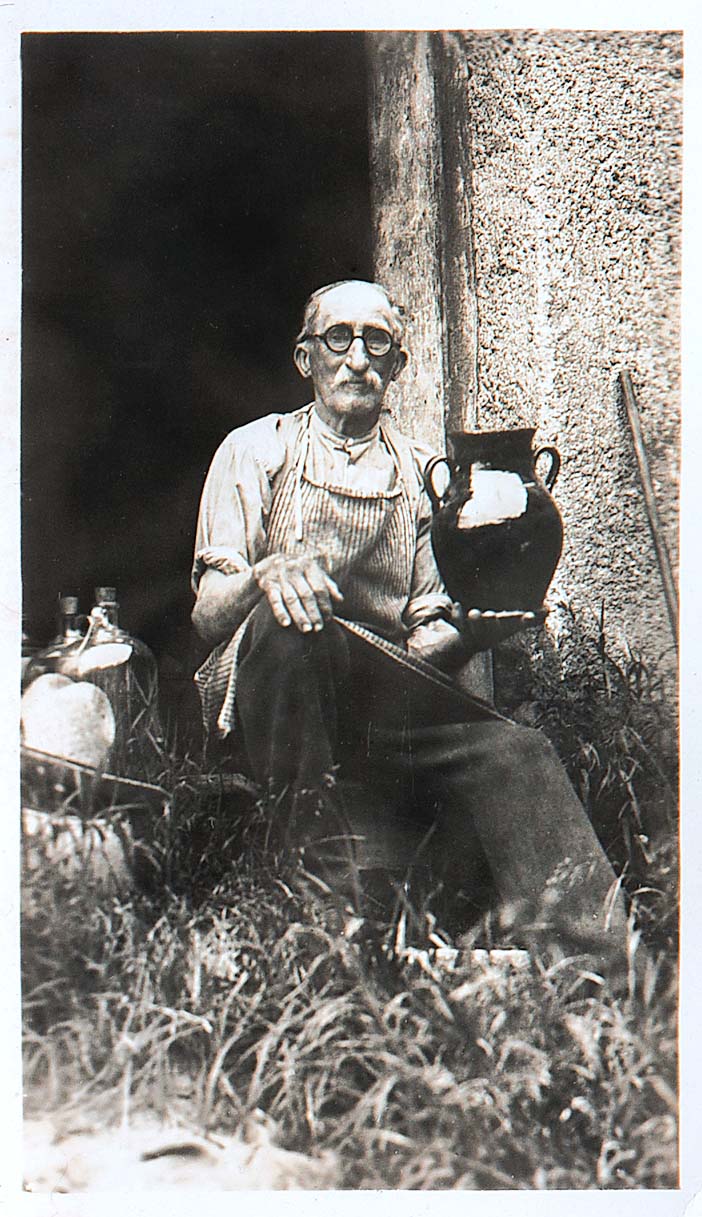
Jacob Medinger, circa 1930s. Collection of Jeffrey Herb.
Redware enjoyed a revival in the early Twentieth Century, an occurrence heavily influenced by the work of Montgomery County, Penn., earthenware potter and businesswoman, Mildred Weekes Davis Keyser (1892-1950). She and her daughter June Keyser Adams (1920-2015) worked together from 1942 under the studio name, Brookcraft Pottery. Freelance writer and editor Karl Pass, in his essay “Mildred Keyser: The Matriarch of Revivalist Pennsylvania German Arts,” traces her training and inspiration.
Briefs are headed by pottery collector/scholar Justin W. Thomas’ “Nathaniel Sellers; A Postmaster and Potter of Upper Hanover, Pennsylvania,” in which he introduces the manganese slip-decorated pieces of Sellers, who has been “entirely overlooked in scholarship.”
Independent scholar, writer and collector Jean D. Renshaw’s research into the inkstands made by Frederick Pflüger that feature hunting scenes as decoration begins with the role of penmanship in Pennsylvania German culture. Along the way, she distinguishes among inkstands made by different members of the Haring family and is able to reattribute to Pflüger a stand once thought to have been made by David and Jaren Haring.
Two potterys are the subjects of the final two briefs. The first of these, “The David B. Huber Pottery of Douglass Township, Montgomery County” by Schwenkfelder Library & Heritage Center curator Candace Kintzer Perry, scrutinizes the shortest-lived pottery of the three best known in the Goshenhoppen region of Southeastern Pennsylvania. Capping the briefs is “The Clay Legacy: Henry Chapman Mercer and the Bucks County Pottery Tradition” by Adam Zayas, scholar and once head ceramicist in Doylestown, Penn., at the Moravian Pottery & Tile Works that Mercer established in 1898. In his opening paragraph, Zayas asserts that the “institution would become a vital link between the fading traditions of early American craftsmanship and the modern world, preserving techniques and aesthetics that might have otherwise been lost to industrialization.”
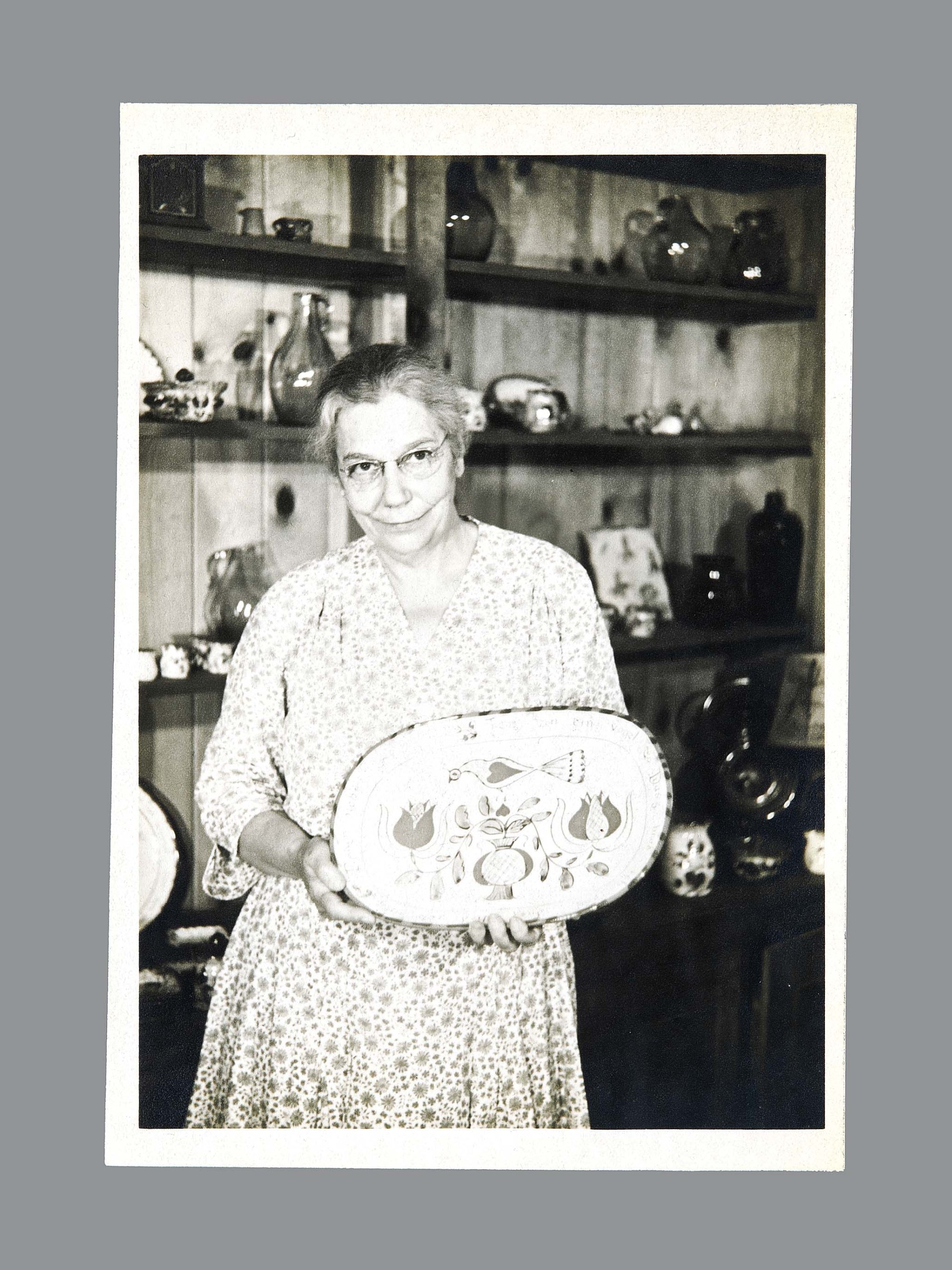
Mildred Keyser, circa 1940. Brookcraft Pottery archives. Gift of Holly Adams Cairns, Historic Trappe.
In Appendix A, Minardi provides illustrations of signed or marked redware by many of the better-known Pennsylvania German potters not covered in the book to be “an aid to future research and collectors.” Works from an additional 25 potteries are presented.
For scholars or interested readers wanting to delve more deeply into the existing scholarship, Appendix B is a list “of the major books and articles on the subject of historic Pennsylvania earthenware pottery, along with pottery in the Shenandoah Valley due to several potters working in both regions.”
Finally, a checklist of documented redware potters working in Montgomery County is provided in Appendix C.
Americana Insights 2025, edited by Lisa Minardi, Distributed by the University of Pennsylvania Press, October 2025, pp. 335, $65, hardcover.
Copies are available for purchase at Historic Trappe or online at www.historictrappe.org or www.pennpress.org.

